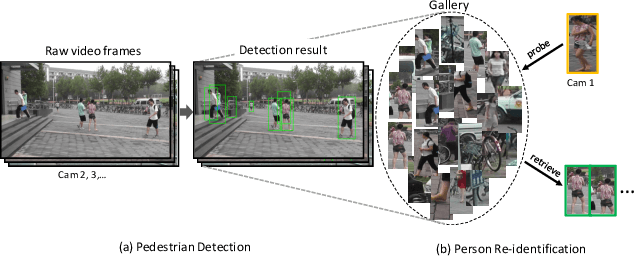Person Re-identification in the Wild
Paper and Code
Apr 06, 2017



We present a novel large-scale dataset and comprehensive baselines for end-to-end pedestrian detection and person recognition in raw video frames. Our baselines address three issues: the performance of various combinations of detectors and recognizers, mechanisms for pedestrian detection to help improve overall re-identification accuracy and assessing the effectiveness of different detectors for re-identification. We make three distinct contributions. First, a new dataset, PRW, is introduced to evaluate Person Re-identification in the Wild, using videos acquired through six synchronized cameras. It contains 932 identities and 11,816 frames in which pedestrians are annotated with their bounding box positions and identities. Extensive benchmarking results are presented on this dataset. Second, we show that pedestrian detection aids re-identification through two simple yet effective improvements: a discriminatively trained ID-discriminative Embedding (IDE) in the person subspace using convolutional neural network (CNN) features and a Confidence Weighted Similarity (CWS) metric that incorporates detection scores into similarity measurement. Third, we derive insights in evaluating detector performance for the particular scenario of accurate person re-identification.
 Add to Chrome
Add to Chrome Add to Firefox
Add to Firefox Add to Edge
Add to Edge